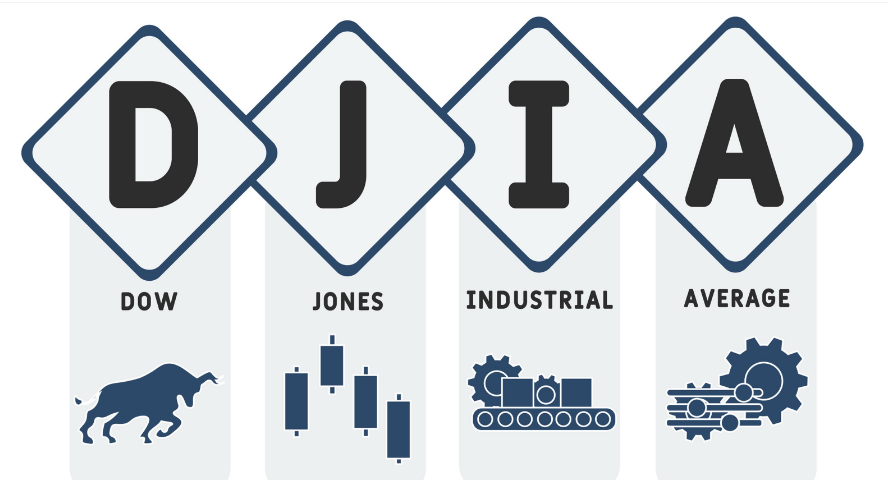The DJI, or Dow Jones Industrial Average
The **Dow Jones Industrial Average (DJI)** is one of the most well-known stock market indices in the world, serving as a barometer of the overall health of the U.S. economy. Established in 1896 by Charles Dow and Edward Jones, the index tracks the stock performance of 30 major publicly traded companies listed on the New York Stock Exchange (NYSE) and the Nasdaq. These companies come from various sectors, including technology, healthcare, finance, consumer goods, and industrials, making the DJI a broad representation of the U.S. economy. This article will explore the history, significance, components, and recent trends of the Dow Jones, as well as its impact on the financial world.
History and Evolution
The DJI was initially created to provide a snapshot of the industrial sector’s performance, which dominated the U.S. economy during the late 19th century. When it was first established, the Dow comprised 12 companies, most of which were in industries like railroads, cotton, and sugar. Over time, the composition of the index has changed significantly to reflect the evolution of the American economy. Today, it includes companies from sectors such as technology, healthcare, and finance, with industrials playing a relatively smaller role.
One of the most significant shifts in the Dow’s history occurred in 1928 when it expanded to 30 companies, a structure that remains to this day. The index’s methodology has also evolved. Originally, the Dow was calculated by adding up the stock prices of the included companies and dividing by the number of stocks. However, in 1928, a divisor was introduced to maintain continuity in the index, accounting for stock splits and other corporate actions.
Components of the Dow Jones
The Dow Jones Industrial Average is a price-weighted index, meaning that the price of each stock in the index influences the overall value of the index. Higher-priced stocks have more weight in determining the index’s movement, which differentiates it from market-capitalization-weighted indices like the S&P 500.
The composition of the Dow is determined by the editors of the *Wall Street Journal*, which is owned by Dow Jones & Company. Companies are chosen based on their prominence in their industries, their contribution to the U.S. economy, and their ability to provide stability and growth. The selection process is subjective, and the index is not a strict measure of the largest companies by market capitalization.
Some of the most prominent companies in the Dow include:
– **Apple (AAPL)**: A global leader in consumer electronics and technology.
– **Microsoft (MSFT)**: One of the largest software companies in the world.
– **Goldman Sachs (GS)**: A major financial services firm.
– **Johnson & Johnson (JNJ)**: A healthcare conglomerate.
– **Walmart (WMT)**: The world’s largest retailer by revenue.
The inclusion of these companies provides a broad overview of different sectors, ensuring that the Dow reflects the performance of a diverse set of industries.
Significance of the Dow Jones
The DJI holds immense significance not just in the U.S. but globally. It is often referred to as a “benchmark” index because of its long history and the importance of the companies it tracks. When people speak about the stock market’s performance, they often refer to the Dow, even though other indices like the S&P 500 or the Nasdaq Composite might offer more comprehensive views of the broader market.
One of the reasons for the Dow’s enduring popularity is its simplicity. The index is easily understood because it tracks only 30 companies. Despite its small size compared to other indices, the companies included in the Dow are often industry leaders with global influence. As a result, the DJI is often seen as a good proxy for the overall health of the U.S. economy.
Recent Trends and Performance
The performance of the DJI is influenced by several factors, including economic data, corporate earnings, interest rates, and geopolitical events. For example, the index experienced significant volatility during the 2008 financial crisis, the COVID-19 pandemic, and more recently due to concerns over inflation and interest rate hikes by the Federal Reserve.
In 2020, during the height of the COVID-19 pandemic, the Dow experienced one of its fastest declines, dropping nearly 40% from its peak in February to its trough in March. However, the index rebounded strongly as monetary and fiscal policies, including the Federal Reserve’s massive stimulus measures, helped stabilize the economy. By late 2020, the Dow surpassed 30,000 points for the first time in its history.
In 2023 and 2024, inflation, rising interest rates, and fears of a potential recession have caused the Dow to experience increased volatility. The Federal Reserve’s efforts to combat inflation through higher interest rates have created downward pressure on equities, as higher borrowing costs can slow economic growth and reduce corporate profits. In this environment, sectors like technology, which make up a significant portion of the Dow, have been particularly affected.
Impact on Investors
For investors, the DJI serves as a key indicator of market trends. When the Dow performs well, it often signals a strong economy and investor confidence. Conversely, a declining Dow can indicate economic uncertainty or downturns.
While many investors use the DJI as a reference point, some criticize it for being a price-weighted index, arguing that it gives too much influence to higher-priced stocks. This can skew the index’s performance, making it less representative of the broader market. Despite this, the Dow remains a valuable tool for those looking to gauge the overall sentiment in the market.
The Dow Jones Industrial Average continues to be a vital part of the financial landscape, offering a snapshot of the performance of leading U.S. companies. Despite its limitations, it remains one of the most widely followed indices in the world. For over a century, the Dow has evolved alongside the U.S. economy, providing investors with a simple yet effective way to track market trends and gauge economic health.

